Difference between revisions of "Messerschmitt Me-262 Schwalbe"
| (One intermediate revision by the same user not shown) | |||
| Line 20: | Line 20: | ||
| − | The German Me-262 was the first mass-produced & operationally used jet fighter in the world. Work on this revolutionary aircraft started in late 1938 under the code name Projekt 1065 the initial design proposed in April 1939 differed considerably from the production version, the engines were mounted in the wing roots & the wings were straight. Development of the BMW 003 jet engines intended for the Me-262 was repeatedly delayed because of the many technical problems encountered with this brand new propulsion system. Because of these problems it was decided to move the engines to pods fitted under the wing to facilitate easy removal for maintenance. This change also necessitated a change of the wings to a swept configuration to compensate for the change in | + | The German Me-262 was the first mass-produced & operationally used jet fighter in the world. Work on this revolutionary aircraft started in late 1938 under the code name Projekt 1065, the initial design proposed in April 1939 differed considerably from the production version, the engines were mounted in the wing roots & the wings were straight. Development of the BMW 003 jet engines intended for the Me-262 was repeatedly delayed because of the many technical problems encountered with this brand new propulsion system. Because of these problems it was decided to move the engines to pods fitted under the wing to facilitate easy removal for maintenance. This change also necessitated a change of the wings to a swept configuration to compensate for the change in centre of gravity. |
| − | The first "V1" prototype was ready in April 1941 however the BMW 003 jet engines intended for the aircraft weren't ready so a conventional Junkers Jumo 210 engine with a propeller was fitted to the nose so basic testing of the airframe could be carried out. It wasn't until November 1941 that a pair of BMW 003 were ready to be fitted to the prototype. For the first test flight the Jumo 210 was retained for safety, which proved wise as both BMW 003 engines suffered a flameout causing them to | + | The first "V1" prototype was ready in April 1941 however the BMW 003 jet engines intended for the aircraft weren't ready so a conventional Junkers Jumo 210 engine with a propeller was fitted to the nose so basic testing of the airframe could be carried out. It wasn't until November 1941 that a pair of BMW 003 were ready to be fitted to the prototype. For the first test flight the Jumo 210 was retained for safety, which proved wise as both BMW 003 engines suffered a flameout causing them to stall, the Jumo 210 was then used to bring the prototype safely back to base. With this failure it was decided to switch to the more reliable Jumo 004 jet engines. The first flight with the Jumo 004 took place on July 1942 in the V3 prototype, marking the first flight of the Me-262 with jets only. |
| − | There was opposition to the Me-262 from several high-ranking officials during early development including the head of Messerschmitt who wanted to concentrate production on proven propeller designs | + | There was opposition to the Me-262 from several high-ranking officials during early development including the head of Messerschmitt, who wanted to concentrate production on proven propeller designs. As well as the commander-in-chief of the Luftwaffe Hermann Göring who expected the war to be won before the aircraft could be ready for production, as such funding & support was withheld at times. After the Me-262 prototype was demonstrated to Hitler in mid 1943 he also insisted that the design should be modified into a multi-role fighter-bomber which lead to redesigns of the nearly finished fighter aircraft. These political problems along with the extended development of the jet engines meant that the Me-262 wasn't able to go into operation use until April 1944, six years after its original conception. |
| − | Once in combat though it proved highly capable and able to outperform most allied fighters, with several pilots becoming aces. It was however extremely vulnerable when taking off or landing as it couldn't | + | Once in combat though it proved highly capable and able to outperform most allied fighters, with several pilots becoming aces. It was however extremely vulnerable when taking off or landing as it couldn't maneuver or accelerate during this time or the engines would stall. Allied pilots would take advantage of this by loitering around airfields & then attacking Me-262 as they appeared. To combat this the Germans reinforced the anti-aircraft fortifications leading up to the runway in order to give the Me-262 more cover. As the war situation deteriorated though most Me-262's were grounded because of fuel shortages & a lack of trained pilots that could handle the power of the new jet aircraft. |
| + | |||
| + | |||
| + | Following the end of the war American, British, French & Soviet forces scrambled to capture these prized aircraft so they could be studied to advance their own jet aircraft programs. Comparative tests between the British [[Gloster Meteor F.III|Gloster Meteor]] & American [[P-80 Shooting Star]] showed the Me-262 to be superior in several aspects however the engines required constant maintenance & had a relatively short lifespan. As such these tests didn't last long and several aircraft were lost due to engine failures. | ||
| + | Out of the 1,430 aircraft built during the war only nine still exist today in museums, with only one still in its original markings. In 2003 the Texas Airplane Factory started the "Me-262 Project" in which they built several replicas using an original Me-262 that was undergoing restoration as a template. Unlike most replicas, which are classified as unique aircraft, the exact replication of the parts used in these Me-262s meant that they are officially registered as newly built Me-262s with the variant name of A-1c. They are all owned by private collectors who often fly them during air shows in American & Germany. | ||
| + | |||
| Line 55: | Line 60: | ||
|content= | |content= | ||
image:me262.jpg{{!}} | image:me262.jpg{{!}} | ||
| + | image:me262_plan.jpg{{!}} | ||
| + | image:me262_plan2.jpg{{!}} | ||
| + | image:me262_plan3.jpg{{!}} | ||
| + | image:me262_01.jpg{{!}} | ||
| + | image:me262_02.jpg{{!}} | ||
| + | image:me262_03.jpg{{!}} | ||
| + | image:me262_04.jpg{{!}} | ||
| + | image:me262_05.jpg{{!}} | ||
}} | }} | ||
Latest revision as of 07:35, 15 March 2018
| ||||||||||||||||||||||||||||
The first "V1" prototype was ready in April 1941 however the BMW 003 jet engines intended for the aircraft weren't ready so a conventional Junkers Jumo 210 engine with a propeller was fitted to the nose so basic testing of the airframe could be carried out. It wasn't until November 1941 that a pair of BMW 003 were ready to be fitted to the prototype. For the first test flight the Jumo 210 was retained for safety, which proved wise as both BMW 003 engines suffered a flameout causing them to stall, the Jumo 210 was then used to bring the prototype safely back to base. With this failure it was decided to switch to the more reliable Jumo 004 jet engines. The first flight with the Jumo 004 took place on July 1942 in the V3 prototype, marking the first flight of the Me-262 with jets only.
There was opposition to the Me-262 from several high-ranking officials during early development including the head of Messerschmitt, who wanted to concentrate production on proven propeller designs. As well as the commander-in-chief of the Luftwaffe Hermann Göring who expected the war to be won before the aircraft could be ready for production, as such funding & support was withheld at times. After the Me-262 prototype was demonstrated to Hitler in mid 1943 he also insisted that the design should be modified into a multi-role fighter-bomber which lead to redesigns of the nearly finished fighter aircraft. These political problems along with the extended development of the jet engines meant that the Me-262 wasn't able to go into operation use until April 1944, six years after its original conception.
Once in combat though it proved highly capable and able to outperform most allied fighters, with several pilots becoming aces. It was however extremely vulnerable when taking off or landing as it couldn't maneuver or accelerate during this time or the engines would stall. Allied pilots would take advantage of this by loitering around airfields & then attacking Me-262 as they appeared. To combat this the Germans reinforced the anti-aircraft fortifications leading up to the runway in order to give the Me-262 more cover. As the war situation deteriorated though most Me-262's were grounded because of fuel shortages & a lack of trained pilots that could handle the power of the new jet aircraft.
Following the end of the war American, British, French & Soviet forces scrambled to capture these prized aircraft so they could be studied to advance their own jet aircraft programs. Comparative tests between the British Gloster Meteor & American P-80 Shooting Star showed the Me-262 to be superior in several aspects however the engines required constant maintenance & had a relatively short lifespan. As such these tests didn't last long and several aircraft were lost due to engine failures.
Out of the 1,430 aircraft built during the war only nine still exist today in museums, with only one still in its original markings. In 2003 the Texas Airplane Factory started the "Me-262 Project" in which they built several replicas using an original Me-262 that was undergoing restoration as a template. Unlike most replicas, which are classified as unique aircraft, the exact replication of the parts used in these Me-262s meant that they are officially registered as newly built Me-262s with the variant name of A-1c. They are all owned by private collectors who often fly them during air shows in American & Germany.
References
| 1930 - 1940: Pre-War |
1940 - 1942: Early-War |
1942 - 1944: Mid-War |
1944 - 1945: Late-War |
1945 - 1960: Post-War |
1930 - 1960: Total-War |
|
| Buildable | Yes | Yes | ||||
| Bonus Crate | Yes | Yes | Yes |
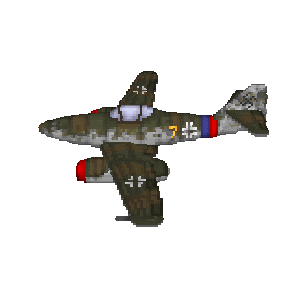
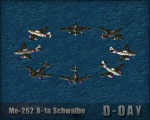

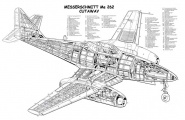
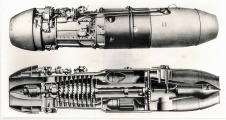

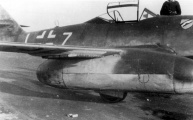
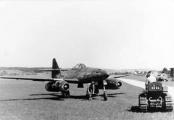
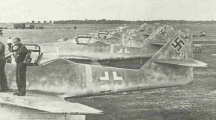
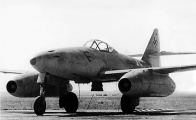
Enable comment auto-refresher